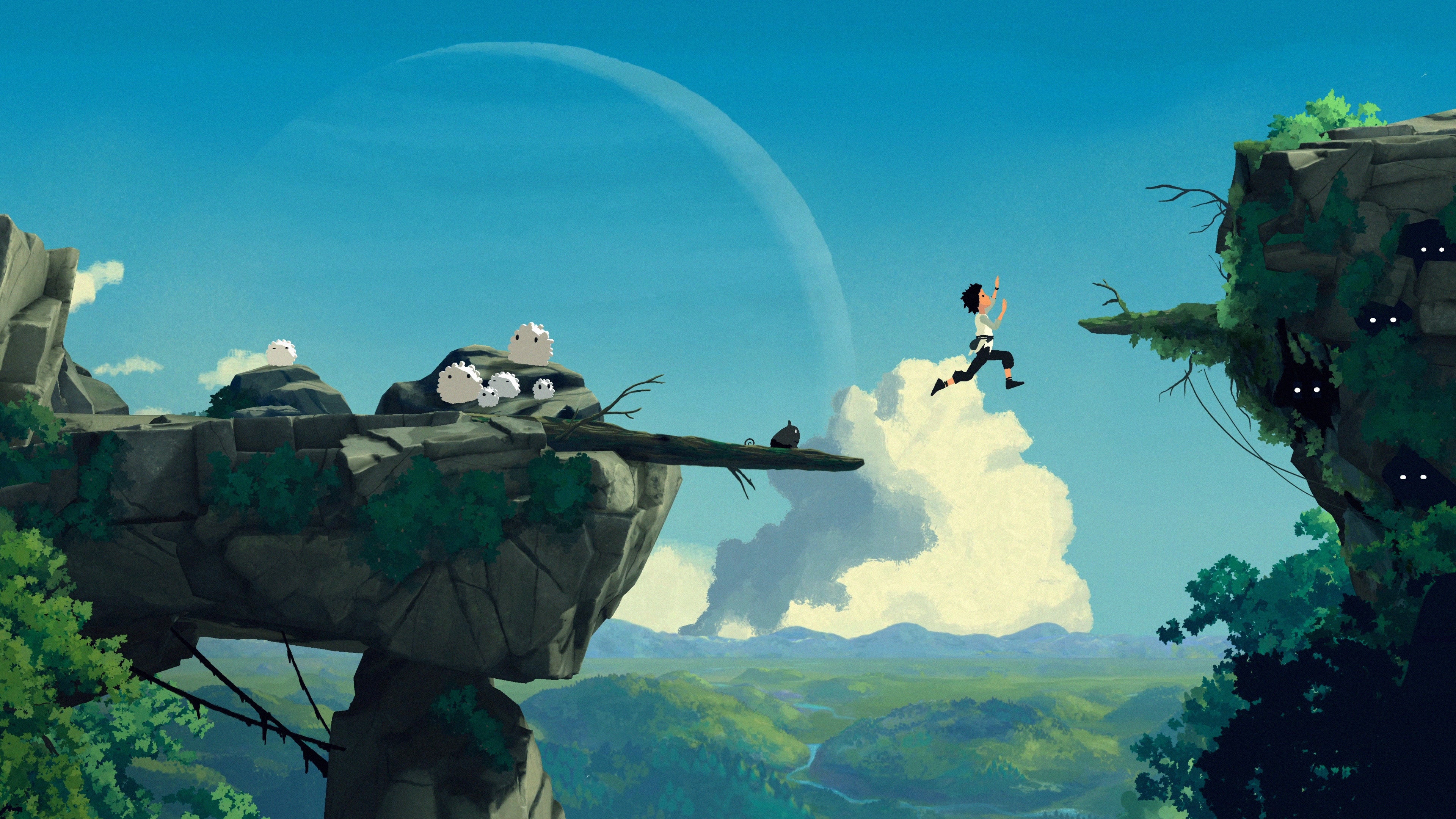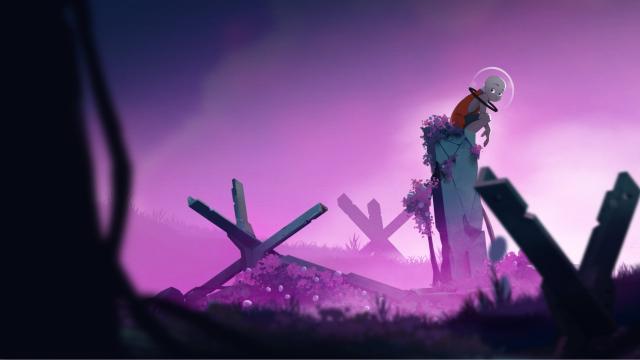A few minutes into The Cub, a forthcoming 2D platformer from Demagog Studios, and it hit me like a train: Everyone wants to make the next Limbo or Inside.
Now, before anyone gets the wrong impression, I’m not saying such platformers are derivative or uninspired. Far from it. If anything, it’s more a commentary on how Playdead’s duology of seminal platformers — 2010’s Limbo and its 2016 spiritual successor, Inside — have transcended “touchstone classic game” status. They’ve spawned a subgenre unto their own. We’ve had “Metroidvania” since video games were little more than primordial strings of code. The term “Soulslike” has dominated gaming discourse for the past half decade. I’d like to propose a new phrase for entry into the gaming shorthand canon: “Limbolike.”
Defining the Limbolike isn’t an exact science, but there’s a visual language that establishes commonality. It can’t just be a side-scrolling platformer with environmental puzzles and a confident, striking art style; that’s way too broad a definition. The Limbolike has to be moody and atmospheric. It has to involve some sort of eerie desolation or weird AF science, or both. It has to cast you as a tenacious loner who doesn’t speak. (Bonus points if you play as a child.) But above all, the Limbolike must convey a sense that you don’t know what the hell is going on — at least not for sure. You’ll have to come up with your own thematic interpretations.
We are, as of late, awash in such games.
Take Silt, a puzzle-platformer from freshman indie studio Spiral Circus out this month for consoles, Switch, and PC. It certainly has the visuals to match, with everything done up in a deliciously textured grayscale. You play as a deep-sea diver exploring derelict science facilities. The gimmick is that you can transfer your consciousness into various creatures of the sea — lanternfish, hammerhead sharks, and so on — using their innate abilities to bypass obstacles. I’m several chapters in and do not have a fucking clue what’s going on. That’s a Limbolike!
There’s also this year’s placid, serene Far: Changing Tides, from Okomotive. Though it doesn’t have the grayscale visuals of Silt, it unequivocally nails the Limbolike tone. There are light platforming elements, and you occasionally have to solve a rudimentary puzzle to progress past, say, a seagate. But the key to its Limbolike-ness is that you’re alone. You’re navigating a world left behind. And you have no clue how, or why, you’re by yourself.
The past few years, of course, have been rife with similarly moody side-scrollers. Some, while terrific, don’t quite clear the Limbolike bar: Ori and the Will of the Wisps. (Too action-focused, too explicit in its themes.) Carrion. (Sorry, the power fantasy disqualifies it.) Metroid Dread. (Yeahhhh, I think that fits into a different platforming subgenre.)
This morning, at the Tribeca Festival, I spent 20 minutes hands-on with The Cub. Based on what I played — with the essential caveat that it’s still in development, and this impression could change upon its full release — I’m inclined to say that clears the bar.

You’re a child. The demo I played started me off on a futuristic version of Earth, demolished and abandoned by humans who’ve decamped the planet to establish a colony on Mars. (The Cub is set in the same fictional universe as Demagog’s capitalism satire, Golf Club: Wasteland.) With no humans around, the child is literally raised by wolves. All the while, soldiers affiliated with some sort of nefarious-seeming scientific organisation try to stop you for reasons that eluded me. The goal, at least stipulated in the demo I played, is to keep moving toward the right side of the screen, which you accomplish by jumping, dashing, clambering ledges, and occasionally swinging on vines.
Prior to the start of the game, the child you play as finds an astronaut’s helmet, which is set to a radio station from Mars. Not only does this offer the child their first experience of other humans, but it also offers a(very minimalist) excuse for a killer OST. The whole game, to my understanding, features a mixture of indie-rock earworms and esoteric dispatches from the now-Martians. (One neat touch: When you go into a cave, the radio turns to static. You can’t get a signal.) The Cub is further full of inexplicable oddities: neon blue giraffes and globules of volatile violet goo, plus that whole “soldiers shooting weapons at a child” thing. But in spots, it’s a touch on the nose. At one point, you see a light-up roadside sign with much of its text turned off. The only letters still on? R-U-I-N.
The Limbolike isn’t just defined by what’s out now but rather what’s on the horizon. Planet of Lana, developed by Wishfully and expected to release this year, casts you as a child on an exoplanet. Early footage indicates extremely Limbo vibes. Somerville, from UK-based developer Jumpship, casts you as an adult, accompanied by a dog, trying to survive on a planet beset by gigantic extraterrestrials. Early footage there also gives off extremely Limbo vibes (A roadmap published by Xbox yesterday indicates Somerville is on track for a 2022 release, but there’s no release date set in stone.)
The Limbolike might not even need to be a side-scroller. During yesterday’s big Xbox showcase, publisher Annapurna Interactive unveiled Cocoon. Developed by the lead gameplay designer on Inside and Limbo, you can’t miss how it carries the DNA of those two games, despite its top-down perspective. There’s some weird shit going on, too: You carry worlds within worlds that exist in Pokéball-sized orbs. Huh.
Given the lengthy and often arduous timelines of game development, it takes a while, but there comes a point where you see a landmark game’s influence start to spawn enough obvious comparisons that you can’t ignore it. We’ve hit it for FromSoft’s punishing action-games. We’ve definitely hit it for The Legend of Zelda: Breath of the Wild, with even the typically brash Sonic the Hedgehog going the route of a somber, melancholic open world. Six years removed from the release of Inside, I feel confident in declaring that we’ve reached its saturation point, too. Bring on the Limbolikes.

Leave a Reply